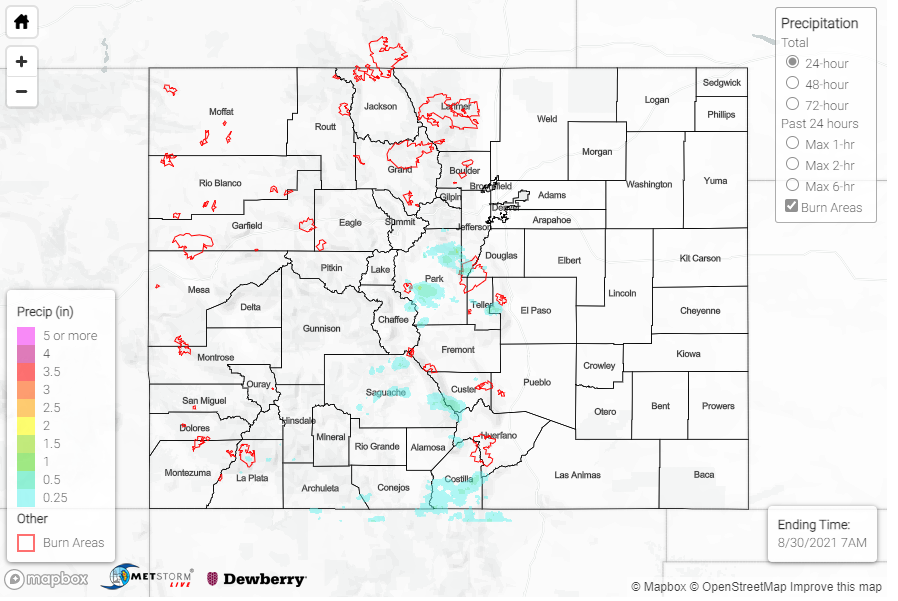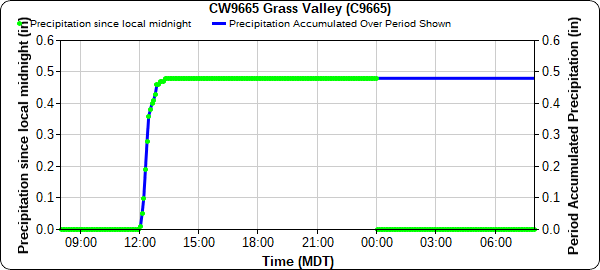Issue Date: Tuesday, August 31st, 2021
Issue Time: 9:25 AM MDT
Summary:
The brief cooldown over the weekend abruptly ended on Monday, with hot temperatures and the return of smoke from large fires burning throughout the Western US. Highs were in the 90s across the state, aside from the high elevations which still had temperatures in the high 70s and 80s. Meteorologist Lauren Whitney shared the following picture on twitter, looking east toward Denver from the top of Lookout Mountain – the Downtown Denver skyline is barely visible under the haze and smoke.
The haze and smoke have settled in again for the Front Range. A terrible view from Lookout Mountain today. We will stay this way again tomorrow, another Ozone Action Day on Tuesday. #cowx #4wx pic.twitter.com/PYPHljRZQv
— Lauren Whitney (@LaurenCBS4) August 30, 2021
In terms of precipitation, daytime heating allowed for very isolated afternoon storms to fire in the high elevations of the San Juan Mountains and Southwest Slope. However limited available moisture kept things dry with mainly gusty outflows. On the Northeast Plains, a line of fast-moving storms developed in the early afternoon. The storms strengthened as they moved eastward towards Kansas, but remained below severe thresholds until the other side of the eastern border. No flooding was reported on Monday. For rainfall estimates in your area, check out the State Precipitation Map below.
Click Here For Map Overview





